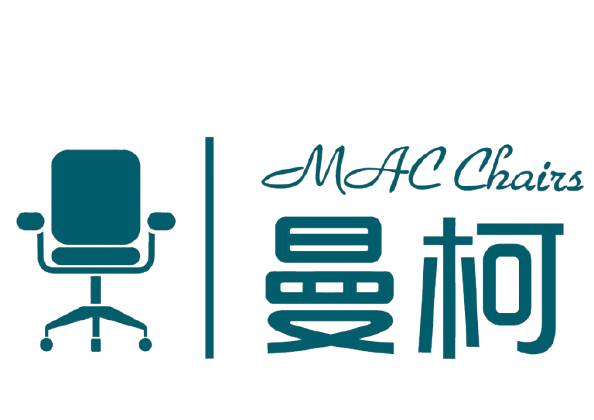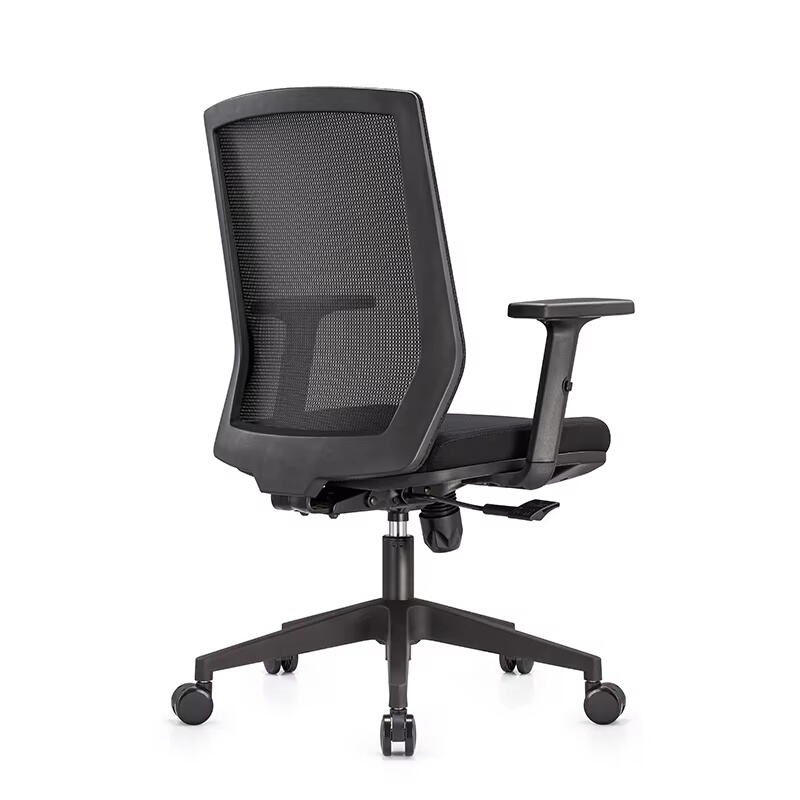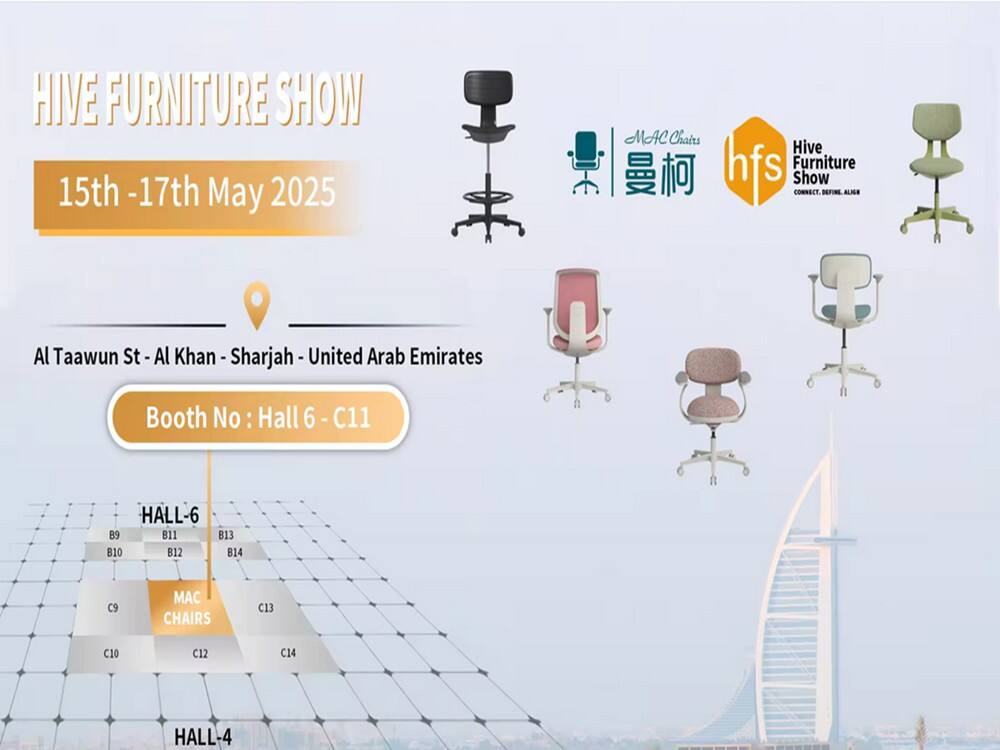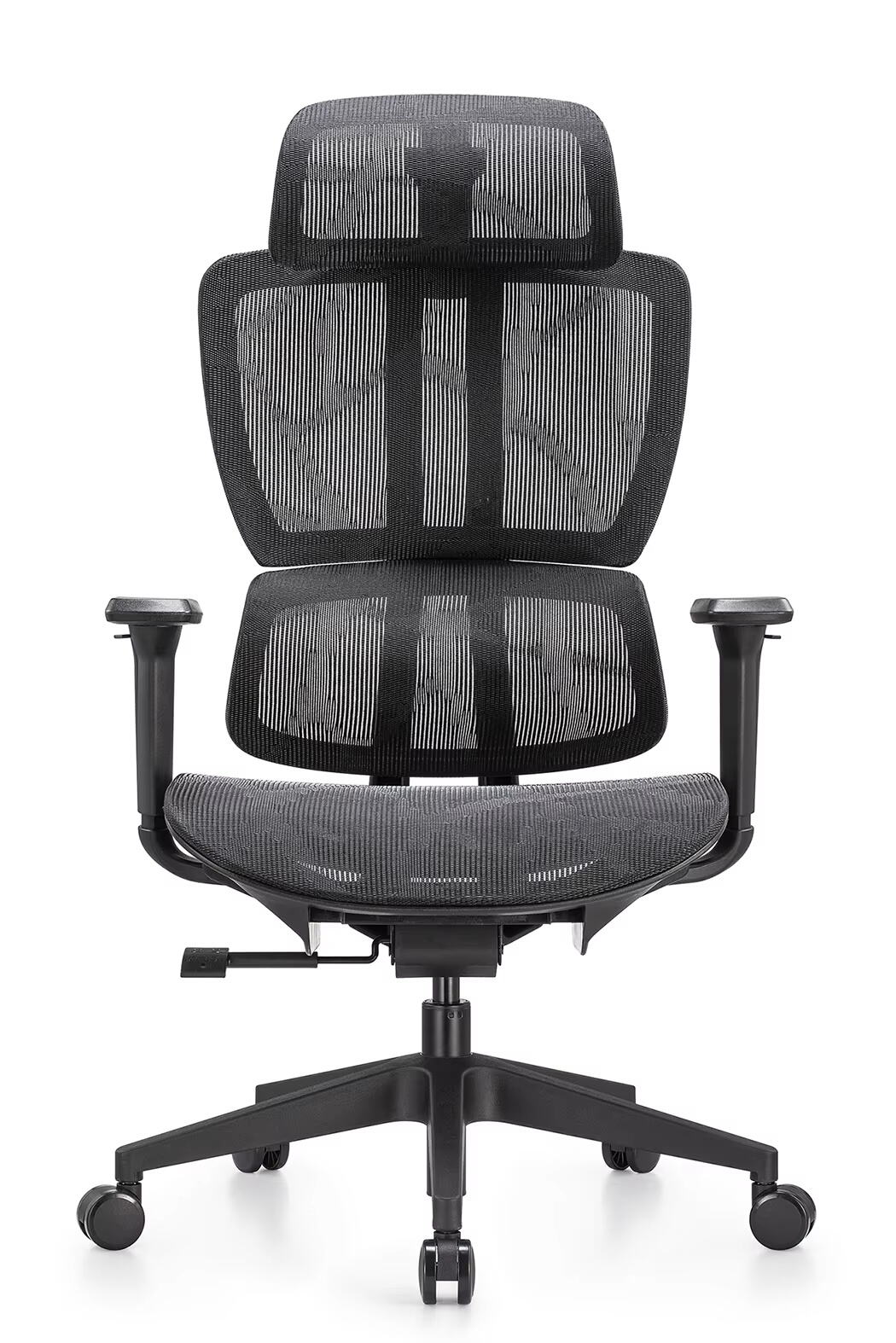
በተለመደው ቢሮ ክርስ ውስጥ የዘይቤ መጠራቀም እንዴት ይከሰታል
በማይነፅፍ ዕቃዎች ውስጥ የሙቀት መቆያ
በጣም ባህላዊ የቢሮ ካርሶች ሁልጊዜ የቪኒል ወይም የሰው የፈጠረውን ድንጋጌ ላይ ይገኛሉ ይሄው በዙሪያቸው የማይነፍስ ነው፡፡ ይሄ ድንጋጌዎች በሰው በቆዳው ላይ ሙቀት እንዲቆረጥ ያደርጋሉ በዚያ ምክንያት ሰዎች በረጅም ጊዜ ሲሰሩ በተመለጠ ሁኔታ እንዲበታኑ ያደርጋል፡፡ አንዳንድ ጥናቶች የማይነፍስ ድንጋጌ ላይ በመቀመጥ ሁለት የፈርን ሙቀት ሙሉ እንዲጨምር ያሳያሉ ይሄው ማንኛውንም ሰው በከፋ ሁኔታ እንዲነሳኑ ያደርጋል፡፡ የዚህ ድንጋጌ ትኩረት በተለያዩ የቢሮ ሁኔታዎች ውስጥ ለመረዳት የሚያስችል ነው ለዚህ ነው የብዙ ሠራተኞች በዕለት ተዕለት በከፋ ሁኔታ ለበት ማከማቻ ይከሰታቸው፡፡ ይሄው በእጅግ በጣም ዝቅተኛ የአየር ማዞሪያ አማራጭ የሚያስችል የተሻለ አማራጭ እንዲኖር ያሳያል ይሄው ደግሞ በእኛ ግዴ ላይ የሚፈጥር አነስተኛ የሙቀት መቆርጠኛ ነው፡፡
የማ cushion የሚሆኑ ዕቃዎች እና የሊባ ተጽእኖ
ለስላሳ ጨርቆችና ቆዳዎች መጀመሪያ ላይ ጥሩ ስሜት ሊፈጥሩ ይችላሉ፤ ሆኖም ጨርቁ በጥብቅ ስለሚታሸግ ሙቀትንና ላብን ይይዛሉ። አብዛኛዎቹ ወፍራም መደርደሪያ ያላቸው የቢሮ ወንበሮች እርጥበትን የማስወገድ አቅማቸውን ያጣሉ፤ ይህም ሰዎች ጠረጴዛቸው ላይ ለጥቂት ሰዓታት ብቻ ከተቀመጡ በኋላ እርጥበት ውስጥ እንዲቀመጡ ያደርጋቸዋል። አንዳንድ ጥናቶች እንደሚያሳዩት ከሠራተኞች መካከል ሁለት ሦስተኛ የሚሆኑት በሥራ ቀን ወንበሮቻቸው ከሚጠቀሙባቸው ቁሳቁሶች ጋር በተያያዘ ምቾት እንደማይሰማቸው ይናገራሉ። እነዚህ ቁጥሮች በጣም ግልጽ የሆነ ነገርን ያመለክታሉ - ነገሮችን ከማባባስ ይልቅ በእውነቱ ላብን በትክክል የሚይዙ የተሻሉ የሚተነፍሱ አማራጮች ያስፈልጉናል። የቢሮ የቤት እቃ አምራቾች ሰራተኞቻቸው ረጅም የስራ ክፍለ ጊዜዎችን ደረቅ እና ምቹ ሆነው እንዲቆዩ የሚያደርጉ የመቀመጫ መፍትሄዎችን በማዘጋጀት ላይ ማተኮር አለባቸው።
በረጅም ጊዜ የሥራ ማቆሚያዎች ወቅት የረጅም ጊዜ ያለው አሰቃቂነት
ቢሮ የሚሠሩ ሰዎች በየቀኑ ለ8 ሰዓታት ወይም ከዚያ በላይ ይቀመጣሉ፣ እና የመቀመጫ ቦታዎቻቸው በተመሳሳይ የአየር መተላለፍ አይነት አይደግፍም፣ ነገር ግን በፍጥነት አይረዱ ይጀምራሉ። ሰዎች በቀመጫ ቦታቸው ላይ ለከፊያ ጊዜ በመቀመጥ በበለጠ ይበሳሉ እና የጎን ይሰማሉ። በዚህ ዓይነት የማይነፋ ቦታዎች ላይ ለወራት የማይቀር መቀመጥ በጣም አስቸኳይ የጤና ችግሮችን ይፈጥራል። በሙሉ ሰዎች በሙሉ በሙሉ የሙቀት እና የማይነፋ ሁኔታዎች መካከል በቀመጥ ምክንያት የቆዳ ችግሮች የያዘባቸውን ሁኔታዎች እንደምንገነዘባቸው እናያለን። ስለዚህ ኃላፊነቱ ያለው ኩባንያዎች ለተሻለ የመቀመጫ ቦታዎች ማሻሻያ መድረክ መውሰድ አለባቸው። በተገቢ አየር መተላለፍ የተሰራ የአርጎኖሚክ ቦታዎች ሰዎችን በሙሉ የስራ ቀን ውስጥ በቀዝ ሁኔታ ይቆያሉ። እነዚህ ቦታዎች ደግሞ በቀላሉ የሚታዩ የቴክኖሎጂ መሳሪያዎች ብቻ አይደሉም፣ እነርሱ በሰዎች የስራ ቦታ ላይ የሚሰማቸው ሁኔታ ላይ ትangible ልዩነት ያመጣሉ። በብዙ ኩባንያዎች የተደራራቢ ቀናት በቀጥታ ይቀንሳሉ እና የሰራተኞች ፍቅር ከፍተኛ ይሆናል እንደተገኙ የተደራራቢ መረጃዎች አሉ።
የአየር ፍሰት መሽ ቴክኖሎጂ፡ ዋና ዋና መካኒኮች ለነፋሱ
ከፍተኛ መስታ መሽ ያለ ቀዳዳ የመቀየሪያ ቅይጥ
ክፍት ጨርቅ ያላቸው ማሰሪያዎች አየር ከተለመደው ጠንካራ ጨርቅ በተሻለ እንዲፈስ ያደርጋሉ፤ ይህም ሰዎች በእነሱ ላይ ተቀምጠው እንዳይዋጡ ያደርጋቸዋል። ጥናቶች እንደሚያሳዩት እንዲህ ዓይነቱ የሸራ ቁሳቁስ አንድ ሰው በተቀመጠበት ቦታ ዙሪያ ያለውን እርጥበት በ30 በመቶ ገደማ ይቀንሳል፤ ይህም በጠረጴዛው ላይ ረጅም ሰዓት መቆየት የሚቻለው በጣም ቀላል እንዲሆን ያደርጋል። የተለመደው የቤት ውስጥ ሽፋን ሙቀትን በቀላሉ ይይዛል ከነዚህ ከሚነፉ አማራጮች ጋር ሲነፃፀር በቢሮዎች ውስጥ ያለው የሙቀት መጠን በበጋ ወራት ሲጨምር ይህ ለውጥ ያመጣል። ስለዚህ በስራ ጣቢያዎች ላይ ምቾት አስፈላጊ ከሆነ አምራቾች በእውነተኛ ዓለም ሁኔታዎች ውስጥ በደንብ የማይሰሩ ባህላዊ ቁሳቁሶችን ከመከተል ይልቅ እነዚህን የመተንፈስ ጨርቆች ወደ ወንበሮቻቸው ዲዛይን ውስጥ ማካተት አለባቸው።
የሙቀት መቆጣጠር እና የደንጋይ መቆጣጠር
የአየር ፍሰት የሚደረግበት የሜሽ ቴክኖሎጂ አየር እንዲገባ ከማድረግ ባሻገር የሰውነት ሙቀትን በደንብ ለመቆጣጠር ይረዳል። አብዛኛዎቹ እንደዚህ ዓይነት ወንበሮች ከቆዳው ላይ ላብ የሚስብ ጨርቅ ይዟሉ፤ ይህም አንድ ሰው ለሰዓታት በዚያ ሲቀመጥ ለውጥ ያመጣል። በተጨባጭ አጠቃቀም ላይ የተገኘውን ውጤት ስንመለከት የተሻለ የሙቀት መቆጣጠሪያ ሰራተኞች በፍጥነት እንዳይደክሙ ያደርጋቸዋል እንዲሁም በመደበኛ የቢሮ ስራዎች ውስጥ 15 በመቶ የበለጠ ምርታማ ይሆናሉ። አሁን ብዙ ኩባንያዎች በእንደዚህ አይነት ወንበሮች ላይ ለምን ኢንቬስት እንደሚያደርጉ ምክንያታዊ ነው። በዛሬው ጊዜ ሥራው በጣም የተጣበበ በመሆኑ ሠራተኞቹን ትኩረት ሰጥተው እንዲሠሩ ማድረግ አስፈላጊ ነው።
የሚሳሌ ጉዞ: በቢሮ የဧညሩ ክርሶች ውስጥ የቁልፍ መስታውን ማወዳደር
የተለያዩ ምሰሶች የአየን ፍሰት ላይ ያላቸው ተጽዕኖ ላይ ጥናት አድርጎ ሜሽ ቁሳቁሶች ሰዎችን በנוחነት ለማቆም እንዴት ጥሩ እንደሆኑ አሳይቷል። የመፅሐፍ ተጓዳኝ ምሰሶች ሲፈትሟቸው ምሁራን አንድ ጥሩ ነገር ለማወቅ ተገኝቷቸው - ይህ ቴክኖሎጂ ያለው ምሰሶች የመታየት ችግሮች ላይ በተወሰነ መጠን ከሌሎች ምሰሶች ጋር ሲነፃፀር በግማሽ ያነሰ አስተያየቶች አሏቸው። የጓደኛቸውን ቦታ የሚዘጋጁ ኢንስቲዩቶች ለመሻሻል የሚያስቡት ከሆነ ይህ ሊያስቸግርባቸው ይችላል። ይህ የሚሸሽ ምሰሶች በመጠቀም ላይ ያሉ ሰዎች በቅርብ ጉብኝት ውስጥ ወይም በአጋር ሲቆሙ በጣም የማይታዩ እና በተገቢነት የተለመዱ ይሆናሉ። በተጨማሪም የተሻለ የመቀመጫ አማራጮች መኖራቸው በእርካታ የተገነቡ ቦታዎችን ማፍረስ ብቻ ሳይሆን የቢዝነስ ኢንስቲዩቶች የገንዘብ ማቆጠር ብቻ ሳይሆን የተሻለ ቦታ ማፍረስ ላይ ጥረት ሰጥተው እንዳሉ የሚያሳይ ነው።
የመስታ የተጣራ ምሰሶች የኢርጎኖሚክስ ንድፍ ባህሪያት
ለሙሉ ቀን የጠንካራ ጣት ማስተማር የሚያስችል የአዝራር ድጋፍ
የመሽ የቀና አስientos ሰዎች የሚያቀርቡት የጠንካራ ኤርጎኖሚክ ጥቅማጥቅሞች አሉት ፣ ምክንያቱም በራስን የሚያደርጉት የአታማ አገልግሎት ጋር የተገነቡ ሲሆን ይህም ለጠንካራ ህብጎት እንዲቆዩ ይረዱናል ፣ ይህም በአንጓዎቹ ምክንያት የሚከሰተውን እፍታ ጭንቀትን ይቀንሳል። ይህ ከባድ ነው ፣ ምክንያቱም በመርሃ ግብረ ሥራ የሚሰሩ ሰዎች የተለያዩ የአንጓዎቹ ችግሮችን እንደሚያጋዙ የሚጠቁመው ምናልባዊ ቁጥር ሲሆን በቀላሉ የሚታወቅ ነው። የዚህ ችግሩን በከፋ አስientos ላይ ሁሉ የቀና ጊዜ ማ ngồi እንደሚያፋጥን ይነግረናል። በብዙ መሽ ሞዴሎች ላይ የሚገኙት የተስተካከለ የአታማ አገልግሎት ፣ ሰዎቹን የመቀየር ችሎታ ይሰጣቸዋል ፣ ስለዚህ በሌላው ላይ በጣም ረጅም የሚመጡ ስብሰባዎች ውስጥ በጠንካራ የሰውነት ቅርፅ ላይ ማቆም ይቻላል። ኤርጎኖሚክ ምሁራን የተቆጣጣሪ የታችኛው አንጓዎቹ አገልግሎት ጋር በተያያዘ ፣ መሽ የሚሆኑትን ቁሳቁሶች በአየር መተላለፍ እንዲያገለግል ያደርጋል ፣ ይህም በጣም ረጅም ጊዜ የመጠቀም ቀላልነትን ያረጋግጣል ፣ ሌሎች የተለያዩ አማራጮች ጋር ሲነፃፀር።
የሚቀየር የተቀባዮች እና የቲልት ጭንቅላት ተግባራዊነት
መገጣጠሚያ ቦታዎችን ለመቀየር ሰዎችን የሚያስችል እና ተንቀሳቃሽ ቦታዎችን ለመቆጣጠር የሚያስችል የመስተዋት ቅንጅ ቤት ባዶ ቦታዎች ለተሳታፊነት ለውጥ ያመጣል። ለስራ ሲቀመጡ ወይም ለረጅም ግብጭት ጉዞች ወቅት ሲመራመሩ ሰራተኞች የራሳቸውን ትክክለኛ ቦታ ማግኘት ይችላሉ። የአካል ጉዞ አገልግሎት አስተማሪዎች የሚያሳዩት የሥራ ቤቶች ውስጥ የሚቀየር የመቀመጫ ቦታዎች ግዝ የሚያቀርቡት በተለያዩ ደረጃዎች በስራ ላይ ያለውን ተሳታፊነት እና ውጤት በስድስቱ በመቶ ይጨምራል። ኩባንያዎች የጊዜ መቆሚያ ቦታዎችን እና የስራ ቅንጅ ቤቶችን በዚያን ዓይነት ቅንጅ ባዶ ቦታዎች ሲሸጡ ሁሉም ይጠነቅናል። ይህ አነፃፁ ሰዎች ረጅም ጊዜ የመቀመጫ ስራዎች በኩል የገን በሽታ ወይም የጎማ ማሽከርከር እንዳይከሰስ ያስችለዋል። ለምሳሌ የቢሮ አስተዳዳሪ እንደሚያስቡት ሰራተኞች በቀመጡት ቦታዎች ላይ ሲቀመጡ የሰዓታት በርካታ ጊዜ በሰረዝ ባዶ ቦታዎች ላይ ሲቀመጡ የሚታዩትን ሁኔታ ማወቅ ይችላሉ።
ለኮንፈረንስ ክፍል ማንኛውም አቅጣጫ የሚንቀሳቀስ የጨር ጎ wheelዎች
በእነዚያ የቢሮ እንግዶች ወንበሮች እና የስብሰባ ክፍል ወንበሮች ላይ ያሉት ጎማዎች በእውነቱ ለመንቀሳቀስ ሲመጣ ልዩነት ይፈጥራሉ ። በስብሰባዎች ላይ የሚቀርቡት ትምህርቶች አንድ ሰው ቦታውን መቀየር ሲፈልግ ውይይቱ እየተንቀሳቀሰ ስለሆነ ወይም የተሻለ ታይነት ሲፈልግ እነዚህ ተንቀሳቃሽ ወንበሮች በቀላሉ እንዲሰሩ ያስችላቸዋል። በስብሰባዎች ላይ በንቃት ለመሳተፍ የሚያስችል አቅም እንዳላቸው ጥናቶች ያሳያሉ። የስብሰባ ክፍሎች በየጊዜው ዝግጅታቸውን ይለውጣሉ፣ ስለዚህ በእነዚህ ባለብዙ አቅጣጫዎች የተሰሩ ወንበሮች እንቅስቃሴ ነገሮች እንዲስተካከሉ እና ውይይቶች በቦታው ውስጥ በተፈጥሮ እንዲፈስ ያደርጋል።
ለረጅም ጊዜ የሥራ ሂደቶች ለእረፍት ማሻሻያ
የቤት ዙሪያ ማስተካከያዎች ለትክክለኛ የክብደት መከፋፈያ
የመቀመጫ ጥልቀትን ማስተካከል የሰውነት ክብደትን ወንበር ላይ በትክክል ለማሰራጨት በጣም አስፈላጊ ነው። ይህ ደግሞ ጠረጴዛ ላይ ወይም ስብሰባ ላይ ለሰዓታት ለሚቀመጡ ሰዎች ትልቅ ለውጥ ያመጣል። የሚስተካከሉ መቀመጫዎች ያሉት ወንበሮች በወገቡና በወገቡ አካባቢ ጫና እንዲኖር ያደርጋሉ፤ ይህም ከጊዜ ወደ ጊዜ እየጨመረ የሚሄደውን የሚያበሳጭ ህመም ይቀንሰዋል። በአሁኑ ጊዜ አብዛኞቹ የኤርጎኖሚ መመሪያዎች የወንበር ቁመቱን ከፍ አድርጎ የሚገልጹት ሠራተኞች ሊፈልጉት ከሚገባቸው ዋና ዋና ባህሪያት አንዱ ነው። ሰዎች በአጠቃላይ ትኩረታቸውን ረዘም ላለ ጊዜ የሚያደርጉ ሲሆን የአካል ቅርጻቸውን ለማስተካከል መቀመጫቸውን ሲያስተካክሉ የተሻለ ስሜት ይሰማቸዋል። ጥናቶች እንደሚያሳዩት በተደጋጋሚ የሚስተካከሉ ጥልቀት ያላቸው ወንበሮች ደስተኛ ሠራተኞች እንዲሆኑና የጀርባ ህመም ቅሬታዎች እንዲቀነሱ ያደርጋሉ። የቤት እቃዎችን ለማሻሻል ለሚፈልጉ ቢሮዎች፣ ጥልቀት የሚስተካከልባቸው አማራጮችን ማከል ምናልባትም ወጪውን ሁሉ ያስከፍላል።
በኮንፌረንስ ጁር ማዘጋጀቶች ውስጥ የአ arms መቀየሪያ ማስተካከያ
በየት እንደሚገኝ ለመስማት የሚችሉ የታጋ ድንጋጭ በጣም አስፈላጊ ናቸው ፣ ምክንያቱም ሰዎች በተለያዩ መንገዶች መቀመጥ ይችላሉ እና በመስፈር ቦታዎች ላይ ትክክለኛ ድጋፍ ይሰጣሉ። ረዥሙ የሚገኝባቸው ሰዎች የታጋ ድንጋጭ ከአካላቸው ቅርፅ እና መጠን ጋር ሲዛመድ በእረፍት ደረጃዎች ውስጥ ትልቅ ልዩነት ይሰማቸዋል። የምርመራዎች የሚያሳዩት ቁመት እና ድፍን ሁለቱንም ለመስማት የሚችሉበት ጊዜ ነው ለሰው የመቀመጫ ሁኔታ የሚያረካው እንዴት እንደሆነ ነው። ኩባንያዎቹ ይህን ዓይነት የሚስማት ባህሪዎች ላይ እንደሚវሉበት ጊዜ በእኛ ሁሉም በተሻለ መንገድ ለመሳተፍ የሚያስችሉ ሥራ ቦታዎች እንደሚፈጥሩ ነው። ሁሉንም ላይ ማስተዋል እንኳን ማስተዋል ከሌለበት እንዲህ አይነት ስሜት ያለው ሁኔታ እንደሚፈጥር አስቡ።
በ8+ ሰአት የ shifts ጊዜ የማይቻል ጭንቀትን ማስወገድ
ኦፊስ ቤት ማስቀመጫዎች ውስጥ የኤርጎኖሚክ አካላት መጨመር በረጅም የሰዓት ስራ በኋላ የማታነስ ልክ የተለየ ልዩነት ያመጣል፣ ይህም በአጠቃላይ ሰራተኞች የጤና ሁኔታ የሚቆይበት ነው። የምርመራዎች ውጤቶች በተሻለ የተሰራ ማስቀመጫዎች ውስጥ የሚቀመጡ ሰዎች የማታነስ ችግሮች ለ30% ያነሰ ይላሉ፣ ይህም ማለት ሠራተኞች በተቆጣጣሪ ጊዜ ውስጥ በተሻለ ዓይነት የስራ ችሎታቸውን ይቆያሉ ማለት ነው። በአብዛኛው የሰው ጥበቃ እና የሰው ሀይል ልዩ አስተማሪዎች በሰዓት አንዱ ሁለት ማቆም ወይንም በመቀመጫ ቁመት ላይ ያለውን ማረጋገጫ መቀየር ይመክሩ እነዚህ ነገሮች በሥራ ቦታ ላይ በተሻለ መንገድ ለመስራት። ሰራተኞች የእረፍት ሁኔታ ላይ ጥሩ ጥረት የሚያሳድሩ ኩባንያዎች በተሳሳተ የሰው በረት እና የገንዝብ ቆርቆሮች ችግሮች በጣም አነስተኛ እና ሁሉም ሰው በተሻለ መንገድ ስራቸውን ያከናውናሉ እና በቀጥታ የማታነስ ውጥና አይከብዱም።
የአየር ፍሰት መሽ የቀመጫ አይነቶችን ለጋራ የስራ ቦታዎች መምረጥ
ለከፍተኛ የጓደኛ አካባቢዎች የመቆጣጠሪያ መስፈርቶች
የድurableነት መቋቋም የሚኖርባቸውን ቦታዎች ለመምረጥ የቢሮ ካርሶችን የምርት ዝርዝሮች መካከል መጀመሪያ ላይ መቆየት አለበት፣ በተለይም በተጋራ የሰው ሀይል ቦታዎች ላይ የሚያስፈልግባቸውን ጊዜ የሚያሳሳብ ነገር ነው። የመሽ ካርሶች በጣም ጥሩ የአየር ፍሰት አቅም ያሳያሉ፣ ምክንያቱም በተደጋጋሚ የሚጠቀሙበት ጊዜ ሌላ የፋብሪክ ወይም የመሰል ቁሳቁሶች ካርሶች ከዚህ በጣም ያነሰ የመቋቋም አቅም ይኖራቸዋል። የተወሰኑ ፈተናዎች እነዚህን ጥሩ የመሽ አማራጮች ከተለመደው የበለጠ እስከ 25% የበለጠ ክብደት መቋቋም ይችላሉ ሲል ያሳያሉ፣ ይህም ለምን እነዚህ ካርሶች በብዙ ቢሮዎች ውስጥ ተመርጧሉ የሚል ግንዛቤ ይሰጣል። በረጅም ጊዜ ውስጥ የሚከሰተውን ለመመልከትም አስፈላጊ ነው። በተገቢ መንገድ የተገነቡ ካርሶች ረጅም ጊዜ ድረስ ይቆያሉ፣ በመቀየር ላይ የሚደርሱ ገንዘቦችን ይቆጥባሉ እና በቀላሉ የተለያዩ ሰራተኞች በተለያዩ ጊዜዎች ተመሳሳይ ቦታ ላይ መቀመጥ የሚኖርባቸውን ቦታዎች ለመቋቋም ተገቢ ናቸው።
የፒቲ አረብ አስተዳደር ጥቅሞች
የመሽ ማጠ ghế በጣም ቀላል ማስተዳደር የሚኖረው የፒቲ ኮንፈረንስ መቀመጫዎች ሲነጻጸር። የቀንጨት ብርሃን ብቻ አስቡት እና በፍጥነት አጠብቁት። ለተለያዩ አገልግሎቶች ወይም ለመሬት ጠጥታ አያስፈልግም። በምርመራዎች የሚታወቀው ይህ ዓይነት ቀላል ማስተዳደር መቀመጫዎች ረጅም ጊዜ የሚቆዩ እና በባክቴሪያዎች ምክንያት የሚያስቸግር ነገር እንደሆነ ነው፣ ይህም በአገልግሎት ቦታዎች ላይ የበለጠ አስፈላጊ ነው ምክንያቱም ሰዎች ቀጭን በመጋዘን እና በስራ ክፍሎች ውስጥ ቀጭን ይጋዜያሉ። የፒቲ መቀመጫዎች ግን እኩል ጉዳይ አይደሉም። እነዚህ በተለምዶ የሚያስፈልጉት የቫኩም አገልግሎት፣ ቦታ ማጽዳት፣ እና አንጋዷ የፕሮፌሽናል አገልግሎት ነው። ይህም በአጠቃላይ ወጪ ላይ በፍጥነት ይጨምራል። ስለዚህ የመሽ መቀመጫዎች ወደ መቀመጫ የሚቀይሩ ኩባንያዎች በረጅም ጊዜ ለወጪ ዉስጥ ገንዘብ ይቆጥቡ እና በቀላሉ የሚታዩ የሥራ ቦታዎችን ይፍጥራሉ።
ለብዙ ግዢ የתקציב ጥናት
በመግቢያ የአየር መስኮት መሽ ቢሮ ለቢሮ በርካታ ሰዎች እየተሰበሩ በሚገኙበት ቦታዎች ገንዘብ ጉዳይ ከፍተኛ አስፈላጊነት ይኖረዋል። በስፋት ማግኘት በብዛት በአብዛኛው 10-15% የሚሆን ዋጋ ቅነሳ ሊያስገድድ ይችላል። የግብር መጠኖችን ለመጫን የሚሞክሩ ኢንስቲዩቶች ለዚህ አስፈላጊ ነው፣ ምክንያቱም በአንድ አይነት አቅም ላይ በያዘ ገንዘብ በተሻለ ጥራት ላይ ይደርሳሉ። በአብዛኛው ባለቤትነት ቤቶች ለዚህ ዓይነት ስትራቴጂ ይገኙታል፣ ምክንያቱም በስፋት መጠን የሚያስፈልጉት ነው። ይህ የገንዘብ መቆጠሪያ መንገድ ግን ስራ ላላቸው ሰዎች ለመቀመጥ የሚያስችል የተመች እና የረጅ ጥራት ያለው አቅም ማግኘት ይታወቃል። የተመች አቅም ማቀዝቀዣ ስራ ላላቸው ሰዎች ቀን አ цел በሙሉ በማይቻል መጠን ለመስራት ይረዳናል፣ ምክንያቱም በተወሰነ ጊዜ ላይ በተማሪ የተሰራ አቅም ላይ መቀመጥ ምክንያት የገንባ ቅር አይፈጥርም።










